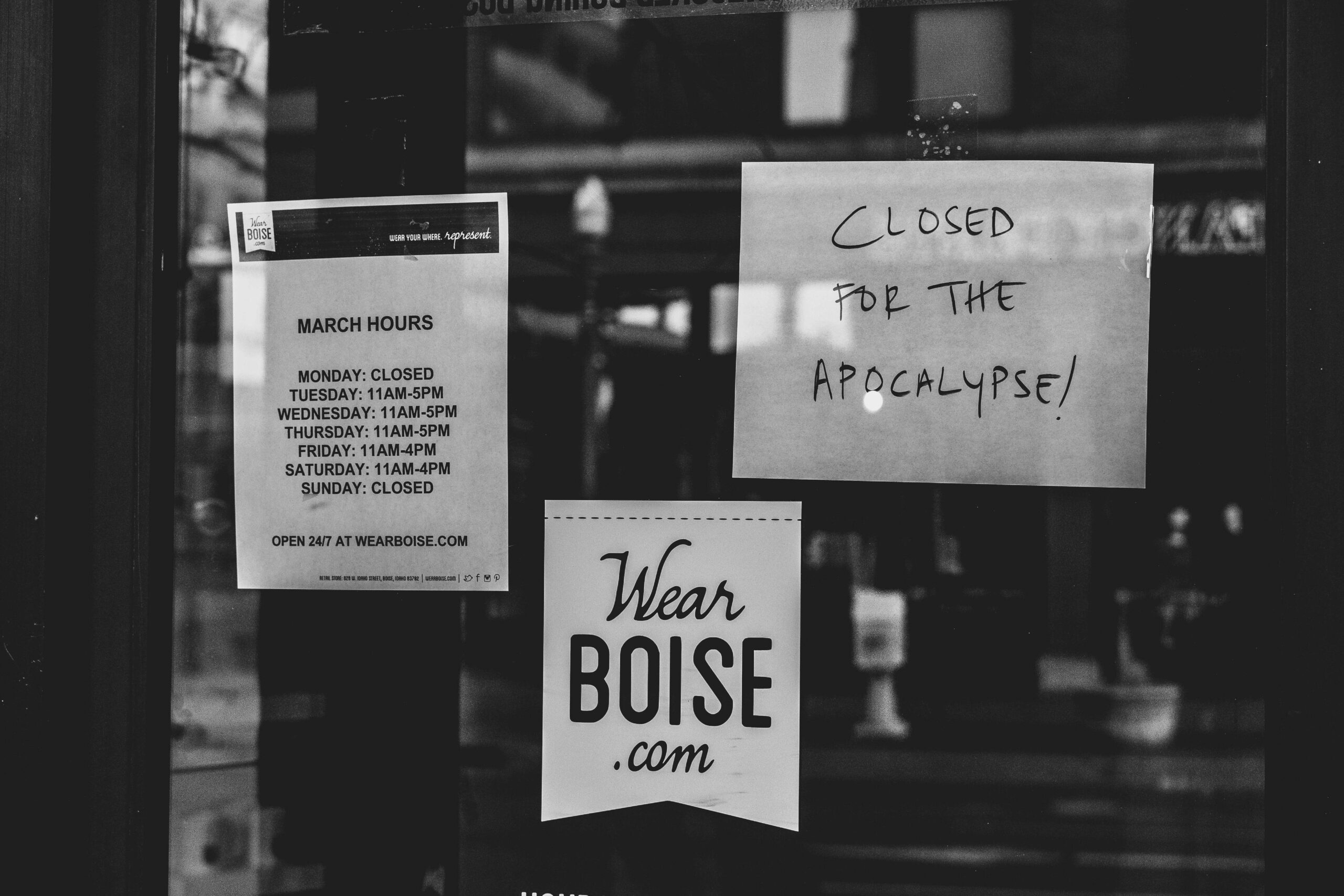For decades, JCPenney was a name that stood for American retail strength. With over 800 stores at its peak and a reputation for offering affordable fashion and home goods, it wasn’t just a shopping destination. It was part of the weekly routine for millions of families.
You’d go in for socks and walk out with curtains, a belt, and a back-to-school wardrobe. It was that kind of store. But now, headlines tell a different story: store closures, declining revenue, and a brand desperately trying to survive in a digital world that’s leaving legacy retailers behind.
If you’re running an ecommerce business or thinking about starting one, this story is closer to home than you might think. It’s not just about big department stores. It’s about what happens when a business stops listening, stops evolving, and stops showing up where customers are.
-
JCPenney’s decline shows how dangerous it is to delay digital transformation in a fast-changing retail landscape.
-
Failing to understand your audience can break customer loyalty and damage long-term trust in your brand.
-
Relying on a single sales channel leaves your business vulnerable when market conditions shift.
-
A strong online presence—with SEO, mobile optimization, and detailed product content—directly impacts conversions and visibility.
-
Staying flexible with your strategy, expenses, and platforms helps you adapt quickly during disruptions like economic downturns or platform changes.
The very mistakes that helped take JCPenney down—slow digital adoption, poor customer insight, and outdated operations—are the same ones that quietly drain online stores of momentum every single day.
I’ve seen it firsthand with sellers who waited too long to update their website or ignored what their buyers were really asking for. So before the cracks turn into collapses, let’s break it down.
A Brief History of JCPenney
JCPenney was founded in 1902 by James Cash Penney, a man who believed in fair pricing, quality goods, and treating customers with respect. It started as a small dry-goods store in Wyoming, but through strategic expansion and a focus on middle-class American shoppers, it became a retail titan.
By 2011, it had over 1,100 locations across the U.S., thousands of employees, and a reputation for being the go-to department store for clothing, home goods, jewelry, and seasonal sales.
For many families, shopping at JCPenney was part of the tradition, whether it was back-to-school outfits or matching Christmas pajamas.
But growth without adaptation has a cost. While the world was shifting to online shopping, JCPenney continued relying heavily on its mall presence and printed catalogs. The retail landscape was evolving fast—Amazon was dominating, Shopify was empowering small sellers, and mobile-first buying habits were taking over.
Yet, JCPenney moved too slowly. It launched its ecommerce site later than its competitors, underinvested in digital infrastructure, and misjudged how quickly consumer expectations were changing. What once looked like stability began to crack quietly at first, then rapidly.
Why JCPenney Stores Are Closing
JCPenney didn’t collapse overnight. Its downfall was the result of years of slow decisions, missed signals, and risky changes that backfired. If you’re an online business owner, each of these turning points holds a valuable lesson, especially if you’re trying to build something that lasts. Let’s look at the real reasons behind the store closures.
Failure to Adapt to Evolving Consumer Behavior
Ecommerce started eating into retail’s pie more than a decade ago, but JCPenney held tight to its in-store identity like it was a safety net. While other companies were busy building user-friendly websites, launching mobile apps, and running targeted Facebook and Google ads, JCPenney was still banking on foot traffic and Sunday circulars.
According to Statista, U.S. ecommerce sales grew from 4.2% in 2010 to nearly 16% in 2019. That’s not a small uptick. It’s a shift in how people shop. Companies like Target and Walmart spotted the wave and rode it early, investing heavily in online shopping, curbside pickup, and mobile-first strategies.
JCPenney, on the other hand, hesitated. It chose familiarity over progress. And in the world of ecommerce, hesitation is expensive.
Poor Leadership Decisions
When Ron Johnson, the former Apple executive, stepped in as CEO in 2011, he had big ideas. He wanted to modernize JCPenney—fewer sales, no coupons, sleek store layouts. It sounded great on paper. But he misunderstood what made people loyal to JCPenney in the first place.
Customers who came for deals suddenly found themselves priced out and confused. In less than two years, the company lost over $4 billion in revenue. That’s not a minor dip. That’s a collapse in trust.
Leadership gambled on a vision that never matched the core audience. And instead of adjusting the plan, they stayed the course, hoping it would click. It never did.
Over-Reliance on Brick-and-Mortar Stores
Running a physical store comes with costs ecommerce doesn’t: monthly leases, property upkeep, in-store employees, and managing stock across hundreds of locations.
While other retailers were shifting their focus toward ecommerce and building centralized, streamlined operations, JCPenney doubled down on opening more stores. It was a model that worked great in the 1990s. But by the time COVID-19 hit, the gaps in JCPenney’s digital operations were too wide to ignore.
According to the U.S. Census Bureau, ecommerce sales jumped by 44.5% in Q2 2020. Millions of consumers switched to buying online practically overnight. JCPenney didn’t have the infrastructure to support that demand, and it paid the price.
Ignoring Target Audience Shifts
As millennials and Gen Z became the dominant buying forces, their shopping habits became the new standard. They wanted fast shipping, mobile-friendly storefronts, authentic messaging, and social proof.
JCPenney’s outdated marketing, clunky digital experience, and lack of brand personality failed to meet those expectations. While brands like ASOS, Fashion Nova, and Shein were building massive followings on Instagram and TikTok, JCPenney was stuck trying to appeal to everyone and ended up resonating with no one.
I’ve seen ecommerce businesses fall into this same trap, assuming that an old customer base will stick around no matter what. But the truth is, your audience evolves whether you’re ready or not.
COVID-19 as a Final Blow
The pandemic exposed what JCPenney had been struggling with for years: a weak online foundation, slow innovation, and a brand identity that felt lost. In May 2020, the company filed for Chapter 11 bankruptcy and shut down nearly 250 stores.
It wasn’t the virus alone that broke the business. It was everything that came before it. COVID-19 simply pulled back the curtain. For a company that once shaped the American shopping experience, it was a hard fall—and a loud warning to every entrepreneur watching.

What Online Business Owners Can Learn from JCPenney’s Mistakes
JCPenney made some big missteps, but for online business owners like you, those failures are a blueprint of what to avoid. If you’re serious about building a business that lasts, this is where the real value is. Let’s break down what you can learn and apply today.
Stay Agile and Embrace Change
Running an online business requires flexibility, not occasionally, but every day. Platforms roll out updates. Algorithms shift. Customer behavior evolves fast. If you’re using the same tactics from three years ago, you’re likely speaking to a version of your audience that no longer exists.
I’ve seen this happen with some of my clients. One ran Facebook ads that performed well in 2017, so they kept running the same style for years, even when ad costs climbed and engagement dropped. Eventually, their traffic flatlined.
Meanwhile, newer competitors were running A/B tests weekly, experimenting with TikTok ads, and improving their mobile experience. The sellers who kept learning, testing, and updating survived. The ones who stayed stuck fell off the map.
Know Your Audience Deeply
Your audience isn’t just a faceless stream of checkout notifications. They’re people with routines, insecurities, and expectations. And if you don’t know them better than your competitors do, they’ll move on to someone who does.
JCPenney learned this the hard way. Its leadership assumed long-time shoppers would embrace a sudden rebrand, but the disconnect was immediate. When I work with sellers, we start by digging into the data. Who’s buying what, when, and why?
Tools like Google Analytics, Facebook Pixel, and even short post-purchase surveys can give you real insight. Once you understand their preferences and pain points, you can shape your messaging, design, and promotions to meet them where they already are, mentally and emotionally.
Prioritize Omnichannel Experiences
Selling on just one platform is like opening a store with only one door. JCPenney’s reliance on foot traffic left it exposed when malls started dying. Online, the same risk applies if you’re depending entirely on, say, Etsy or Amazon.
You need a structure that allows customers to find you everywhere they hang out whether that’s Instagram, email, search engines, or TikTok. One client of mine saw a 40% sales bump after setting up email flows that nudged social media followers to their Shopify store.
You don’t need to be everywhere all at once, but you do need a strategy that weaves your touchpoints into a seamless journey.
Reinvest in Your Online Presence
Your website should feel like your best employee—knowledgeable, fast, and easy to talk to. That means no broken links, slow load times, or vague product descriptions. Invest in SEO from day one.
Make your pages mobile-optimized, add schema markup, and use real long-tail keywords like “handmade ceramic mugs under $20” or “eco-friendly skincare for sensitive skin” that reflect exactly what your customers are typing into search bars.
I had a client who initially skipped detailed descriptions because she assumed “people don’t read.” Her bounce rate was sky-high.
Once we rewrote the product copy using specific keywords, rich visuals, and a simple narrative that explained who the item was perfect for, her conversions nearly doubled. That kind of ROI starts with taking your own storefront seriously.
Build Brand Loyalty Through Authenticity and Consistency
People may buy once because of a sale, but they come back because they feel something when they interact with your brand. JCPenney’s mistake was flipping its identity without warning. Customers who relied on affordable deals felt ignored, and that trust was hard to rebuild.
If you’re running an online store, you have to build trust like it’s currency. Consistent visuals, tone, and values across your website, email campaigns, and ads make your brand feel reliable. And the human side matters more than you think.
Share your story, show behind-the-scenes videos, and reply to comments. When buyers feel seen, they’re more likely to stick with you through product launches, price changes, and even mistakes.
Prepare for Disruption
You won’t always get a warning before things break. Whether it’s a new competitor undercutting your prices or a platform banning your niche overnight, staying lean and ready can mean the difference between surviving and shutting down.
During COVID-19, the online sellers I saw recover quickly were the ones who weren’t overly dependent on one product, supplier, or traffic source. They had other income streams, backup vendors, and systems in place to pivot.
If you’re too locked into one way of operating, even a small disruption can undo months of growth. Flexibility in your expenses, partnerships, and logistics gives you breathing room when the pressure hits.
A Retail Giant, a Warning Sign
Some believe JCPenney still has a chance to make a comeback. With new ownership under Simon Property Group and Brookfield Asset Management, the brand is showing signs of revival—leaner store formats, stronger focus on private labels, and talks of a digital overhaul.
There’s a pulse, but whether that leads to long-term stability or a slow fade is still uncertain. The truth is, the damage wasn’t sudden. It was the result of missed signals, delayed decisions, and a belief that customers would always be there.

Whether JCPenney returns to glory or not, its story is packed with lessons. You’re not running a billion-dollar department store, but you are making choices every day that shape the future of your business.
Are you listening to your customers? Are you keeping up with where they spend their time, what they expect, and how they shop? If you’re stuck in outdated strategies or hoping old systems will hold up forever, that’s a risk you can’t afford.
In my opinion, the real takeaway for you is this: success favors the attentive. The online landscape is brutal, fast, and incredibly rewarding if you play it right. Every week, I see online sellers rise and fall, not because of luck, but because of how closely they pay attention. To their numbers. To their customers. To their competition.
Don’t wait until your cart is empty to realize you’ve been building a business on outdated assumptions. Adapt now. Learn from JCPenney’s fall so you never have to explain yours.







